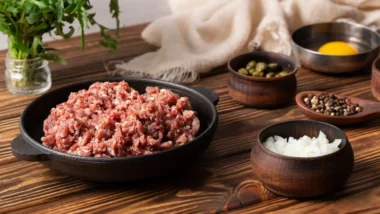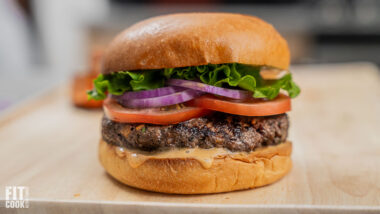Slow Cooker Pulled Lamb Recipe

Want to save this recipe?
I got you! Just enter your email address, and I'll forward it to your inbox! Plus, you'll receive a bonus of healthful, "must-try" recipes each week!
If you’re searching for a delicious and convenient meal prep option, look no further than this slow cooker pulled lamb recipe. Bursting with flavor and tender texture, this dish is sure to become a staple in your kitchen rotation. Whether you’re a lamb aficionado or new to cooking with this protein, you’ll be pleasantly surprised by how easy and rewarding it is to prepare slow-cooked pulled lamb.
Why You Will Love This Best Pulled Lamb Recipe
Tender Perfection: Slow cooking allows the lamb to become incredibly tender, effortlessly falling apart with each bite.
Rich Flavor Profile: With a blend of aromatic spices and savory ingredients, this recipe yields a dish that’s bursting with Middle Eastern-inspired flavors.
Meal Prep Friendly: Prepare a batch of this pulled lamb ahead of time and enjoy it throughout the week. It’s perfect for busy days when you crave a hearty, homemade meal without the fuss.
What are the health benefits of lamb?
- Protein: Lamb is a rich source of high-quality protein, which is essential for muscle repair, growth, and overall body function.
- Nutrient-rich: Lamb is packed with various vitamins and minerals, including vitamin B12, zinc, selenium, iron, and niacin. These nutrients play vital roles in energy production, immune function, and metabolism.
- Iron: Lamb contains “heme iron,” which is more easily absorbed by the body compared to non-heme iron found in plant-based foods. Adequate iron is important for preventing anemia and maintaining healthy blood oxygen levels.
- Omega-3 Fatty Acids: though not as high as in fish, lamb contains omega-3 fatty acids, which have anti-inflammatory properties and are beneficial for heart health.
- Conjugated Linoleic Acid (CLA): Do you know those fat loss supplements with CLA sold in vitamin shops? Lamb has CLA, a type of fatty acid that has been linked to improved body composition and reduced risk of heart disease.
How much lamb in a diet is healthy?
As always, it depends on the individual.
The proper amount of daily lamb consumption can vary depending on dietary needs, preferences, and overall health goals.
Generally, it’s recommended to consume lamb (and any other protein) in moderation as part of a varied diet, alongside other protein sources such as poultry, fish, legumes, and plant-based proteins.
A typical serving size of cooked lamb is around 3-4 ounces (85g-113g) cooked, which provides about 20g -25g of protein.
Is Lamb healthier than beef?
Delve into the age-old debate of lamb versus beef and uncover the truth about their nutritional profiles. From omega-3 fatty acids to saturated fat content, explore the nuances of these two protein sources and discover why lamb may offer unique advantages for your health.
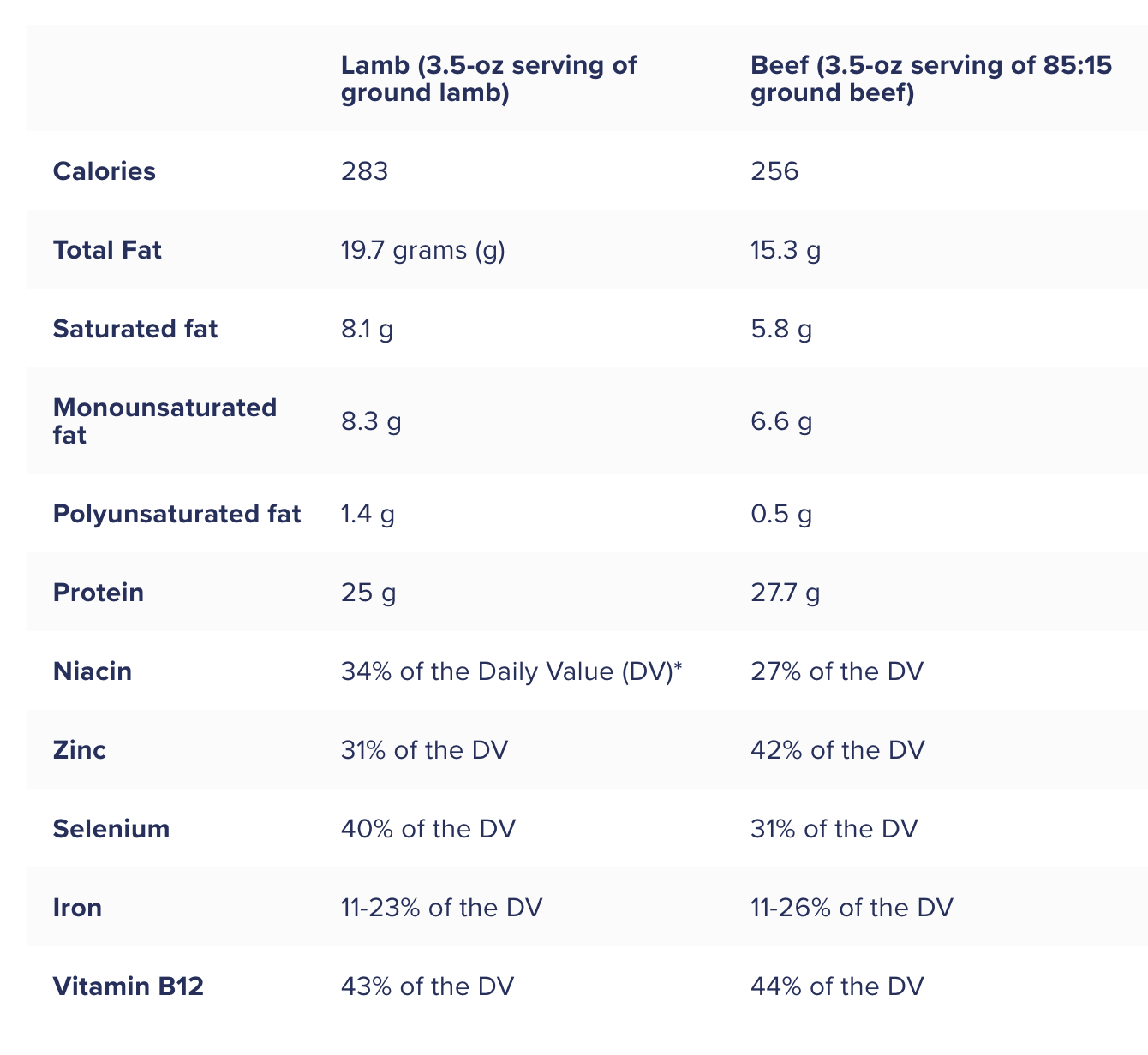
Above graphic from Nutrition Insider.
It really depends on what’s most important to you in your diet. While lamb may be slightly higher in calories and saturated fat, it has more omega-3 fatty acids and is richer in all of the essential amino acids.
The saturated fat content of lamb can vary depending on the cut and how it is prepared. In daily consumption, lamb tends to have a lower saturated fat content compared to beef since there is less marbleization in lamb meat and it is easy to trim visible fat.
For example, a 3oz (85g) serving of lamb leg, trimmed of visible fat, typically contains around 2.6 grams of saturated fat.
In contrast, a 3oz size of beef (such as a lean cut like sirloin or tenderloin), trimmed of visible fat, may contain around 2.9g -3.1g of saturated fat.
Again – it all comes down to the cut of meat, the cooking method, and any added fats or sauces.
Generally speaking, lean cuts of both lamb and beef can be part of a healthy diet when consumed in moderation. It’s also important to consider overall dietary patterns and choose a variety of protein sources to ensure a balanced intake of nutrients.
Variety matters.
Is Lamb Easy to Cook?
Demystify the process of slow cooking lamb with this foolproof recipe for slow cooked pulled lamb. From searing to simmering, learn the step-by-step techniques for achieving tender, flavorful meat every time. With its simplicity and versatility, lamb is sure to become a staple in your culinary repertoire.
Can you overcook lamb?
Explore the science behind cooking lamb and discover why it’s nearly impossible to overcook this flavorful protein. From collagen breakdown to temperature control, uncover the secrets to achieving perfectly tender lamb with minimal effort.
Well, let’s just say it’s pretty darn hard! I once left the lamb roasting uncovered in the oven for an extra hour and it was crispy on the outside, juicy on the inside, and slid off the bone like butter.
You could shred the meat with a spoon it was so tender!
Slow-cooked or roasted lamb is often difficult to overcook due to several factors:
- Moisture: Lamb is naturally moist, which helps keep it tender and juicy during cooking. Slow cooking or roasting allows the meat to cook gradually, retaining its moisture and preventing it from drying out even if cooked for an extended period.
- Connective Tissue Breakdown: Lamb contains connective tissues, such as collagen, which can be tough if not properly cooked. Slow cooking or roasting at low temperatures breaks down these connective tissues over time, resulting in tender and flavorful meat.This process of collagen breakdown, known as collagen hydrolysis, occurs more efficiently at lower temperatures, making it difficult to overcook the lamb.
- Fat Content: Lamb meat typically has a moderate amount of fat, which contributes to its flavor and juiciness. During slow cooking or roasting, the fat slowly renders, enhancing moisture and tenderness.
- Temperature Control: cooking lamb at low temperatures over an extended period (slow) reduces the risk of overheating and overcooking the meat, compared to faster cooking methods where the temperature can fluctuate rapidly.
How to make pulled lamb
Set the oven to 400F/204C.
Remove the lamb from the packaging and remove any plastic twine helping it together. Trim any large visible pieces of fat.
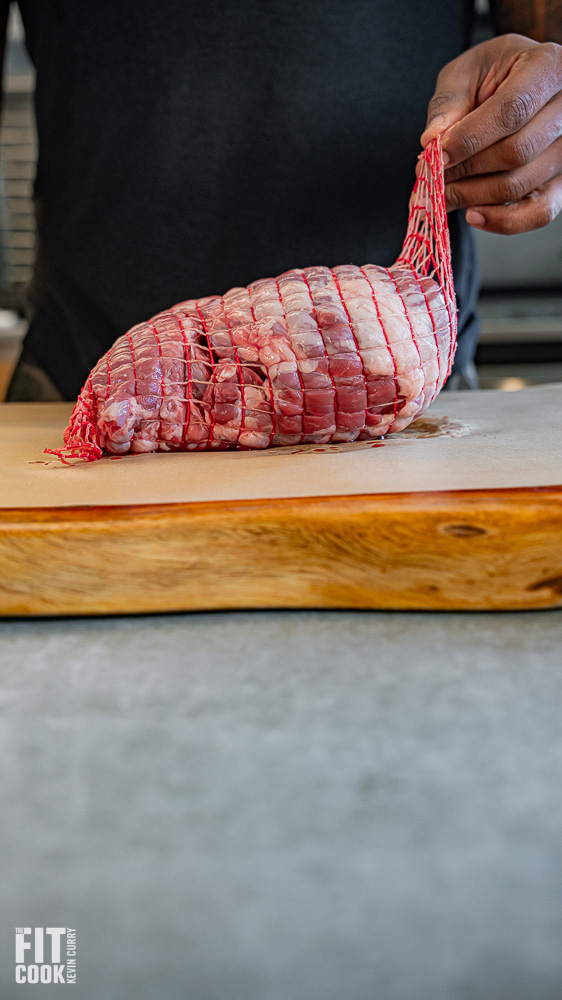
Use twine to tie the lamb back together so it doesn’t fall apart too quickly when roasting.

Season the outside with sea salt and pepper.

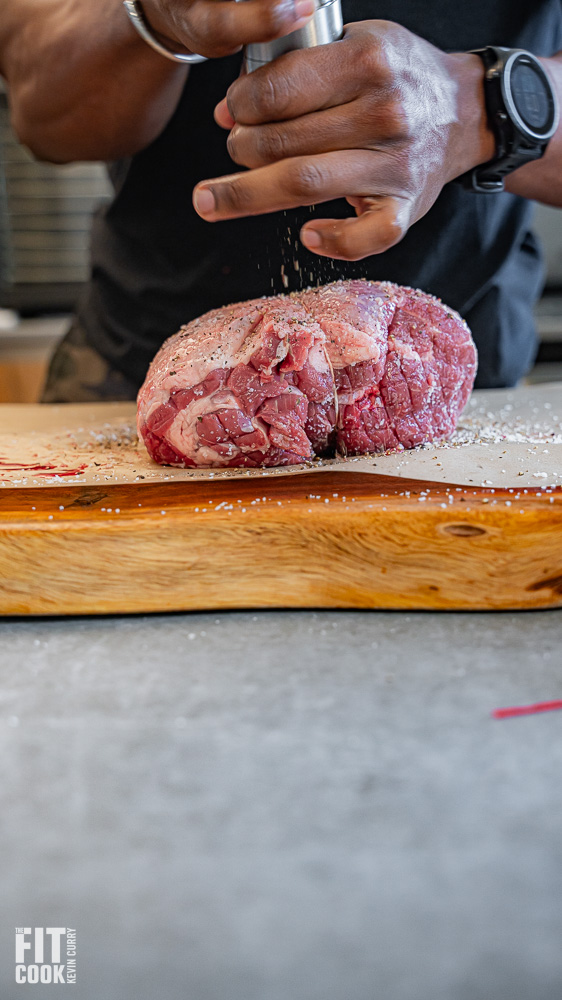
Set a dutch oven or braiser on medium heat and spray with a little oil. Since lamb has visible fat, the fat will render in the pan so there’s no need to add more oil in my opinion.
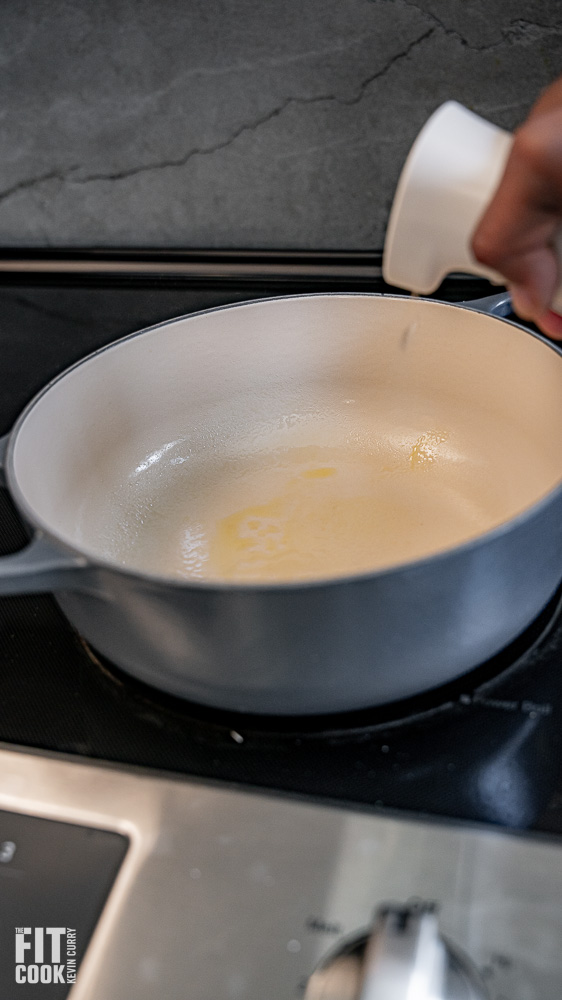
Add the lamb and sear on all sides. Then remove from the pan.
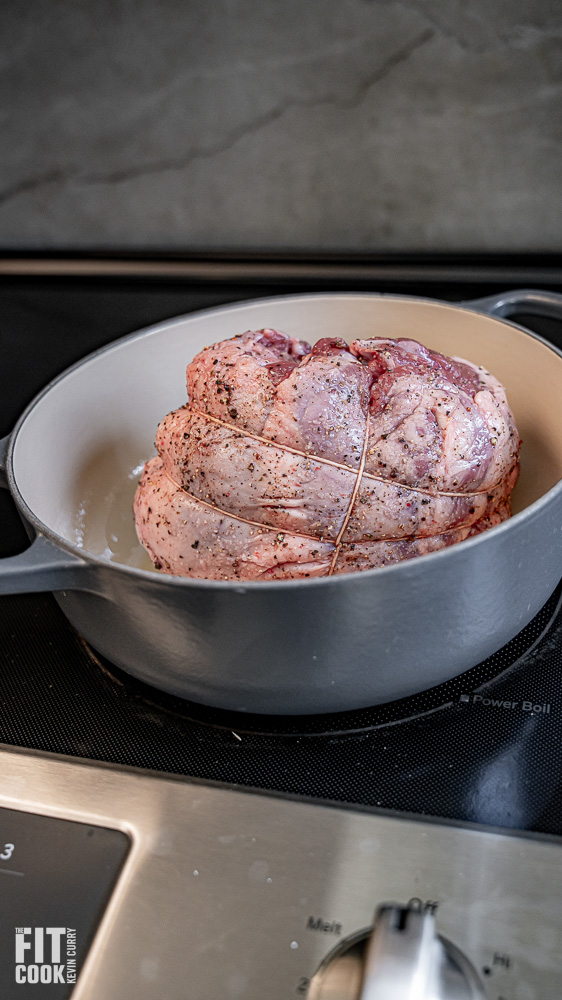
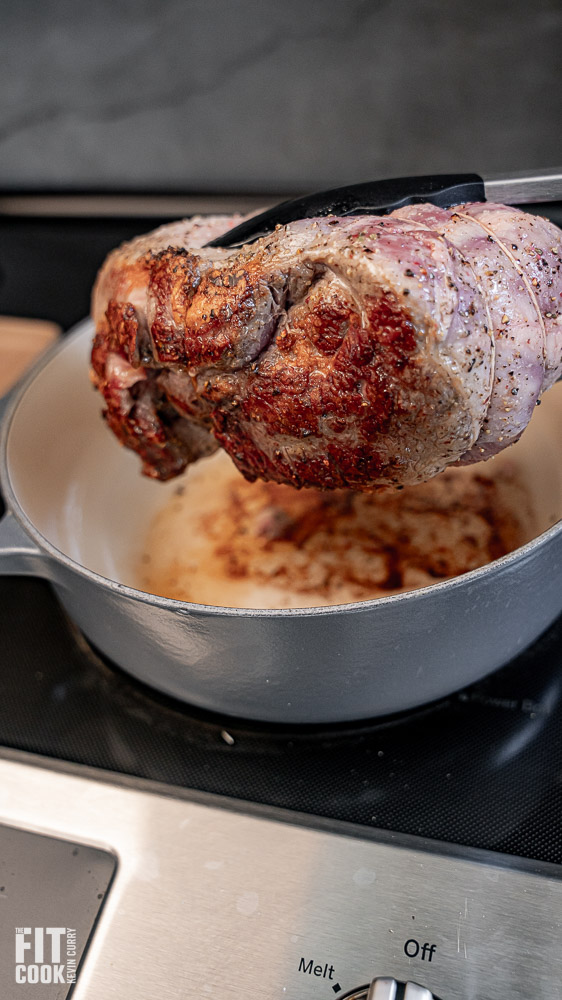
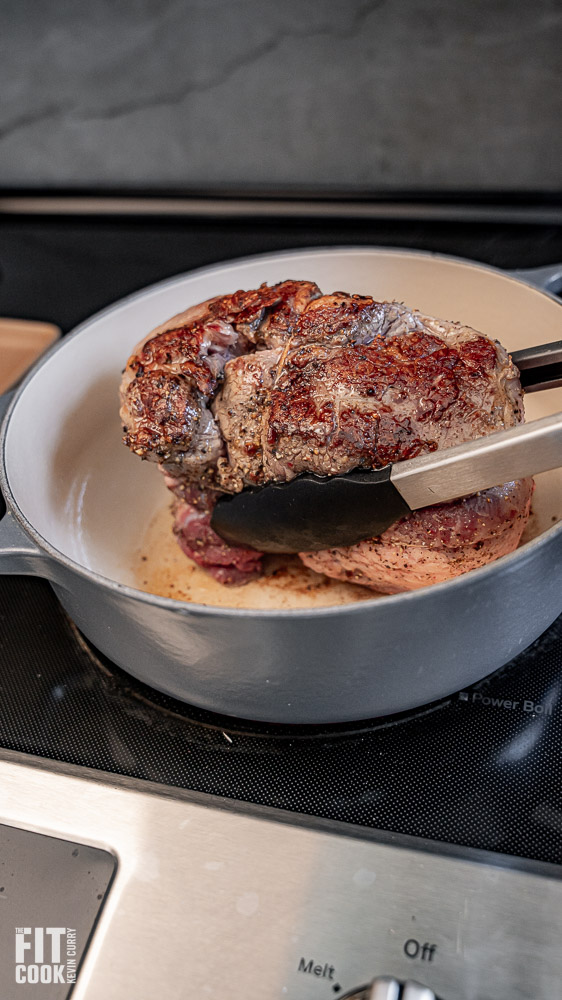
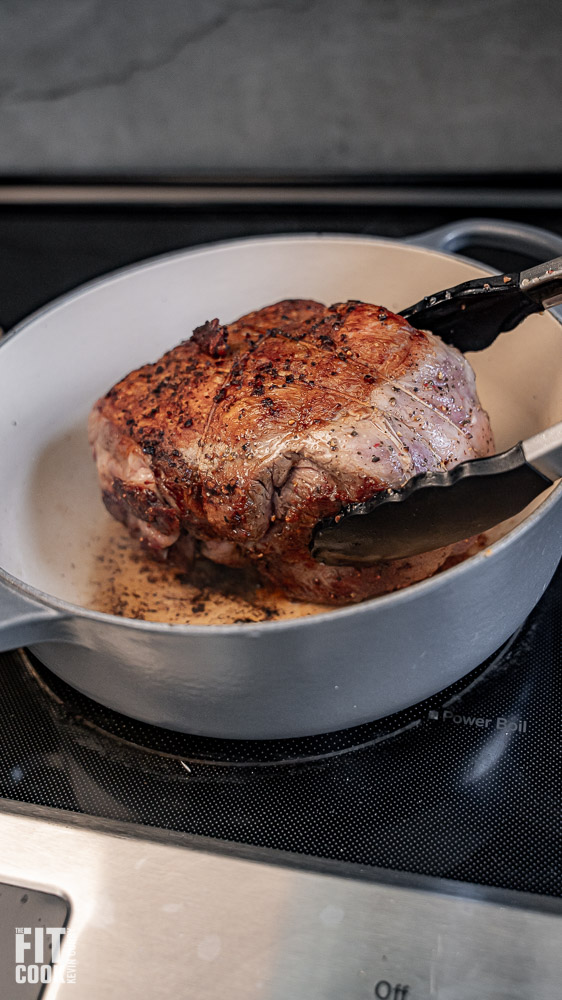
Add onions and sauté until brown and translucent, then add garlic.
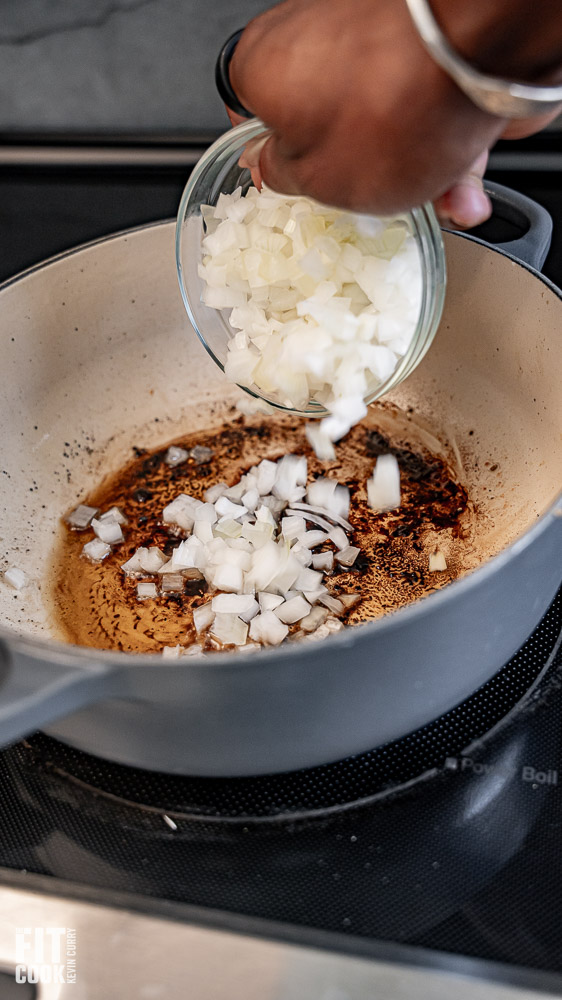
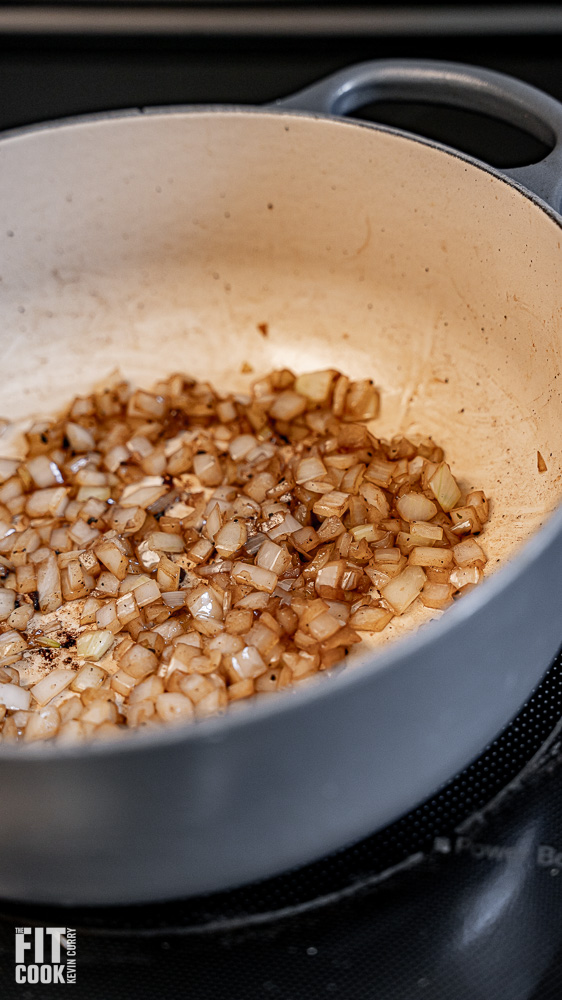
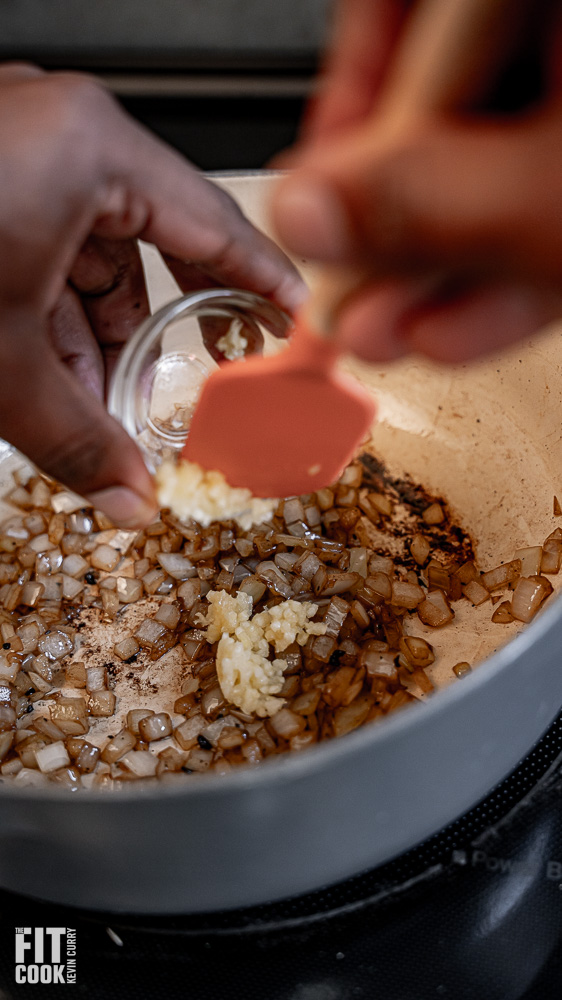
Bloom your choice of spices in the oil with onion and garlic. One spice I almost always include when cooking lamb is (smoked) paprika.

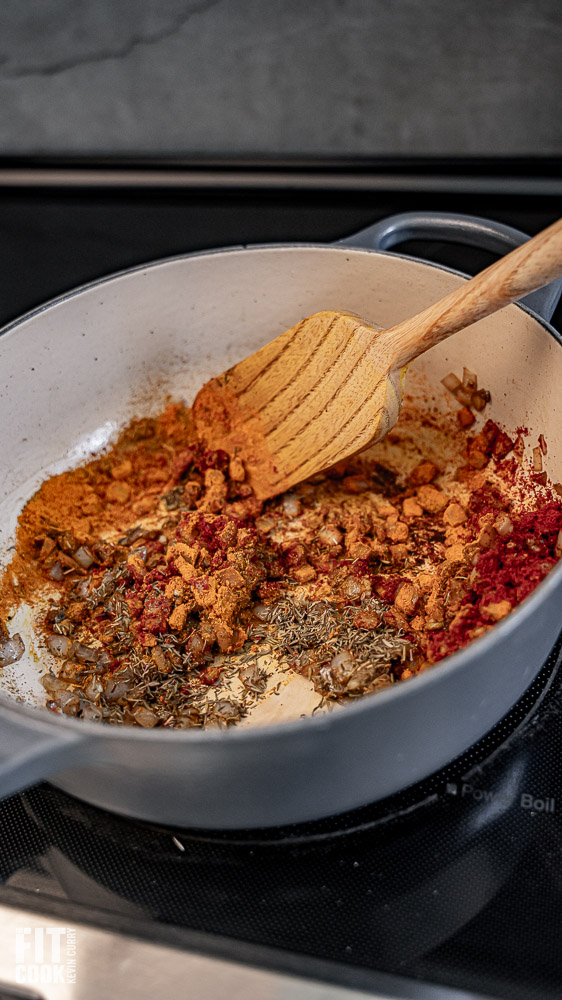
Reduce with red wine or red wine vinegar to about half, or until a paste begins to form.
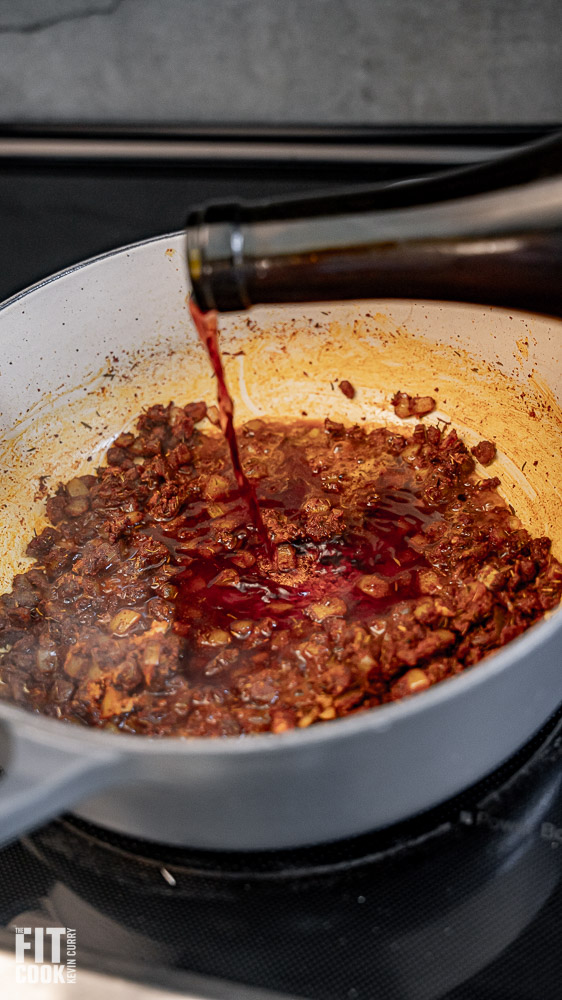
Add low-sodium beef broth.
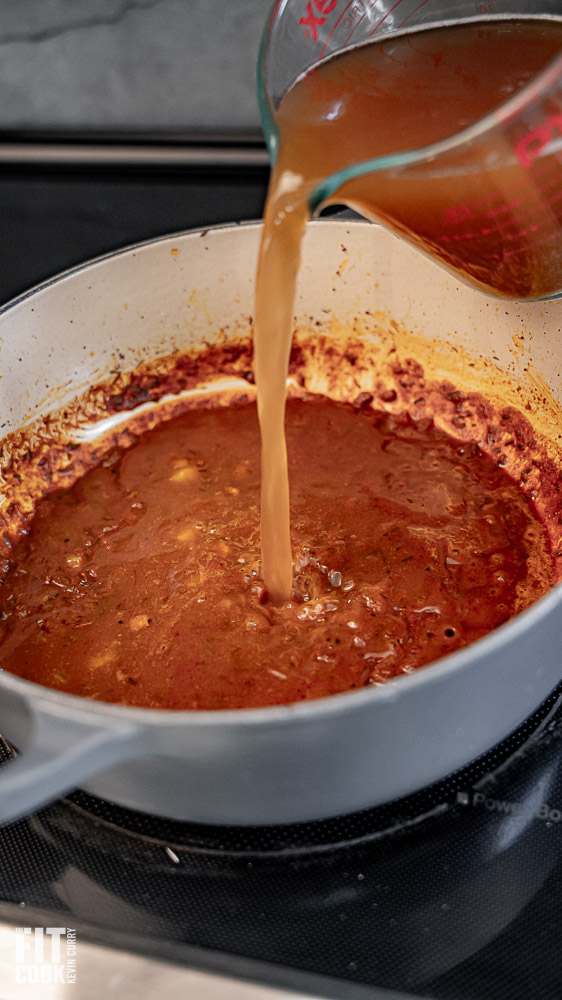
Add tomato paste and a cinnamon stick (a staple in the majority of my lamb dishes).
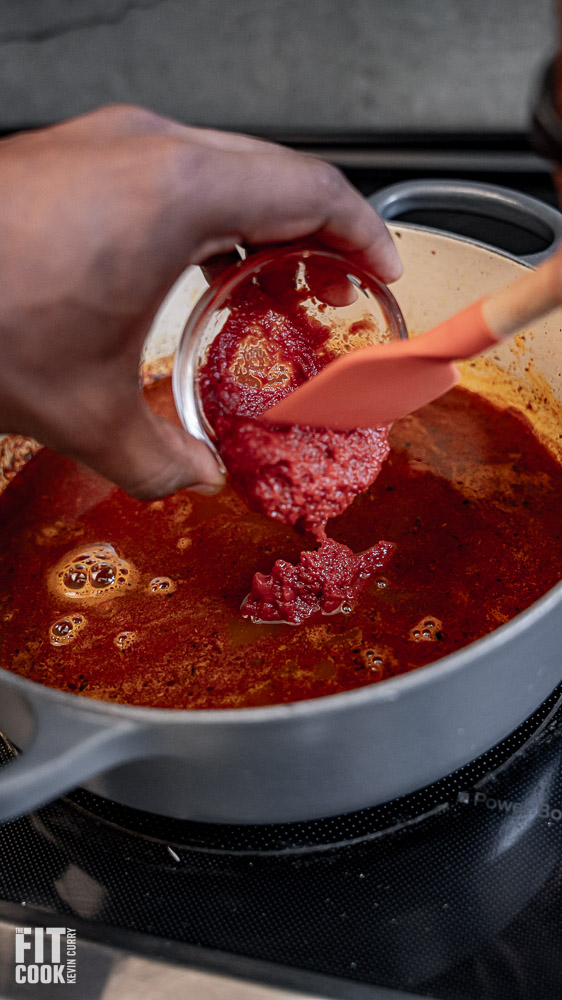

Remove from the heat and add the lamb back to the pot.
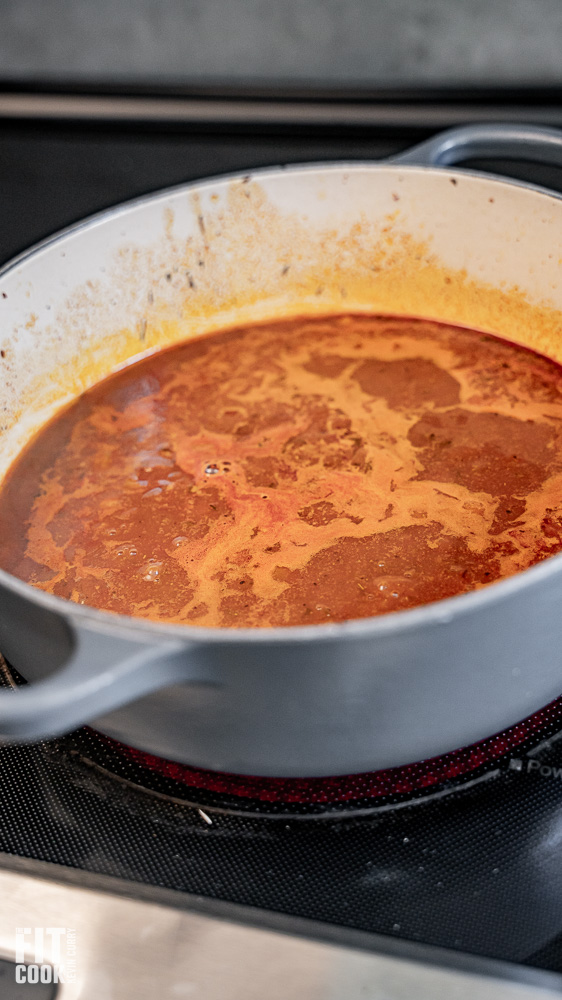
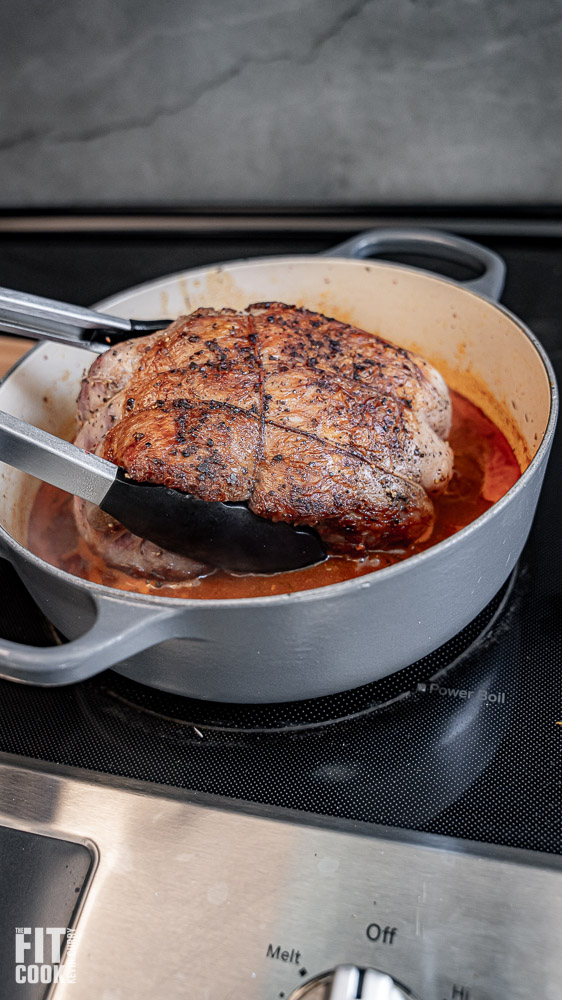
Spoon a few tablespoons over the lamb. Then cover and place in the oven for 1.5 – 2 hours.
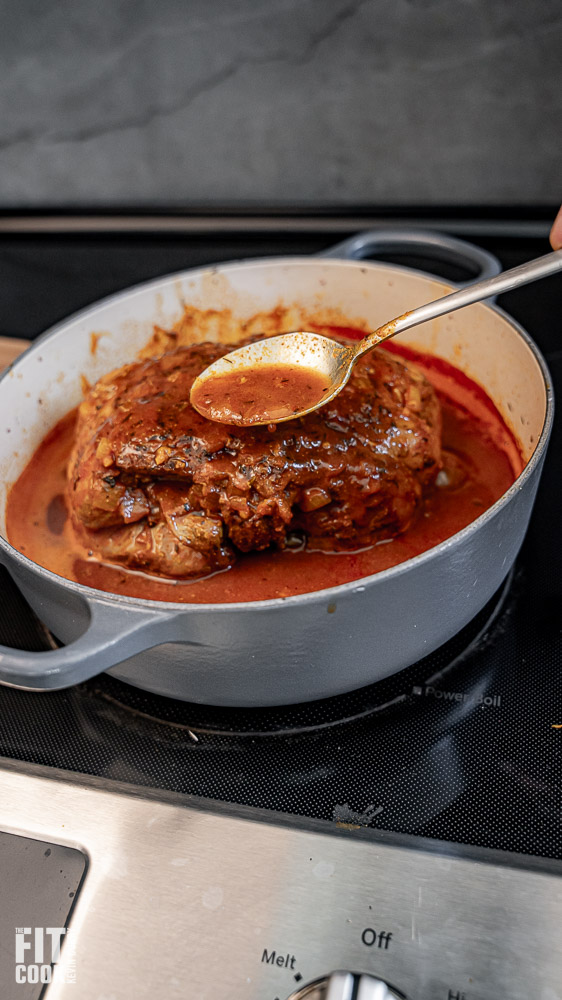
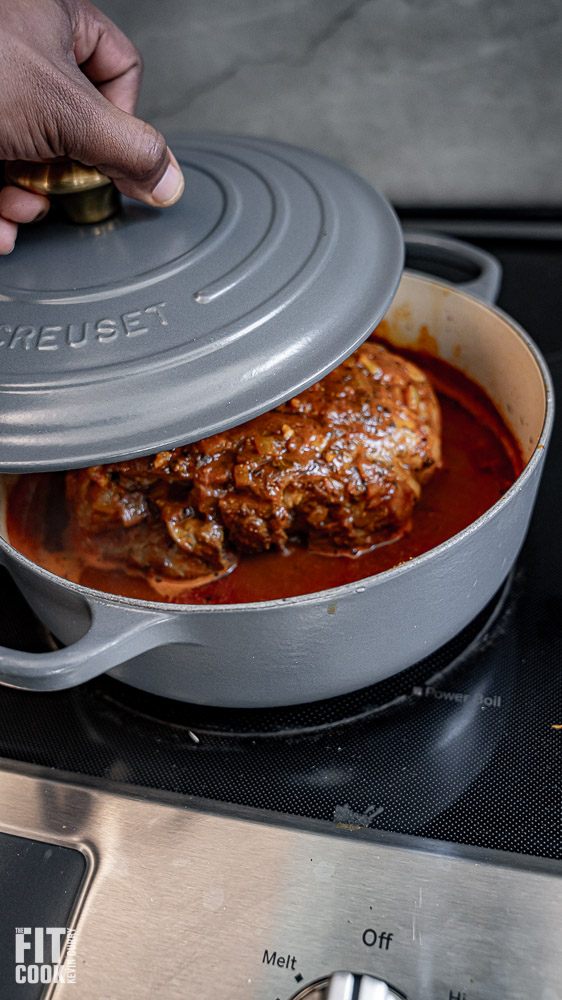
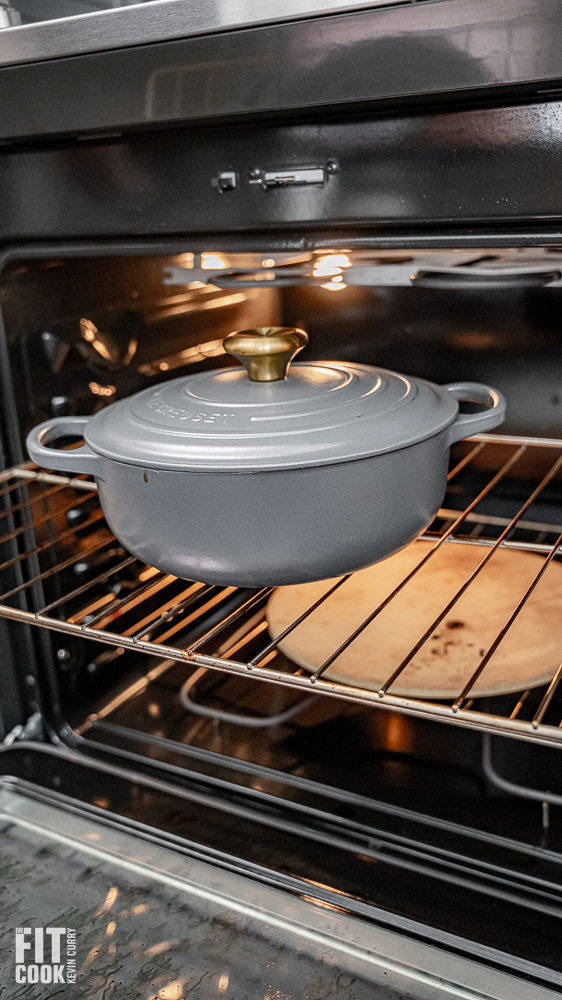
Remove the lid and spoon more of the sauce over the lamb. Roast uncovered for an additional 45 minutes – 1 hour.
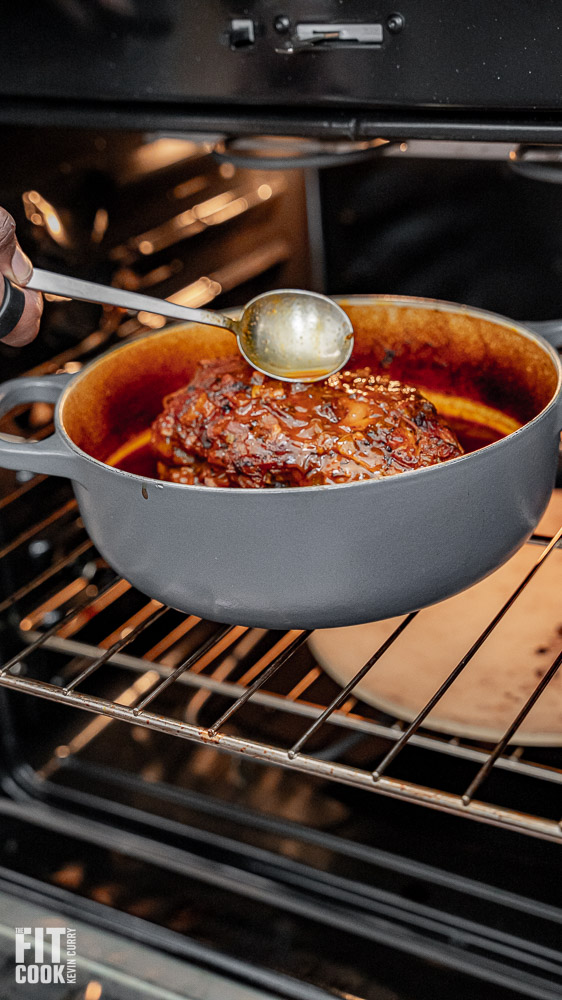
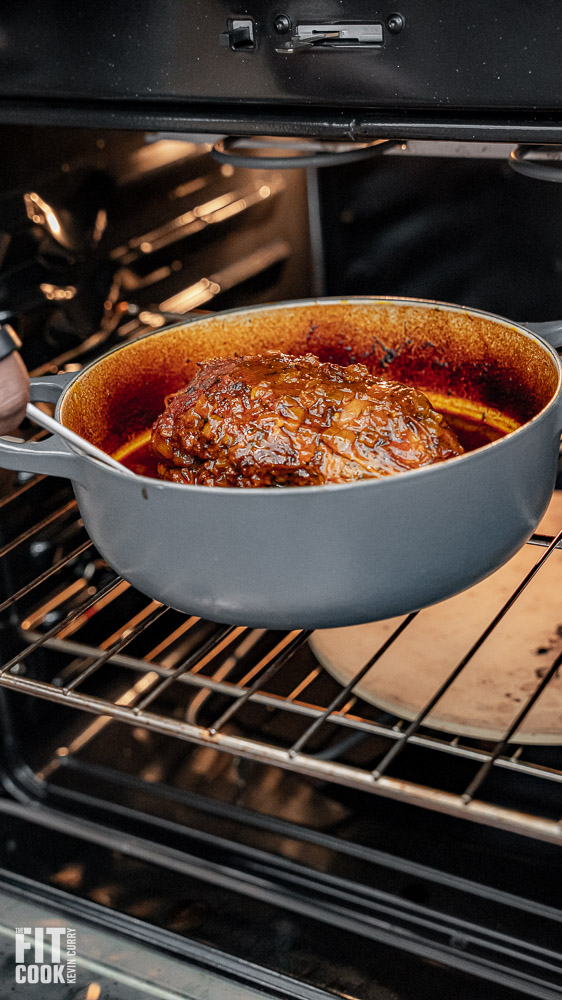
After the cooking cycle natural gravy should have formed. Use a paper towel and lightly pat the top of the gravy to remove excess grease.
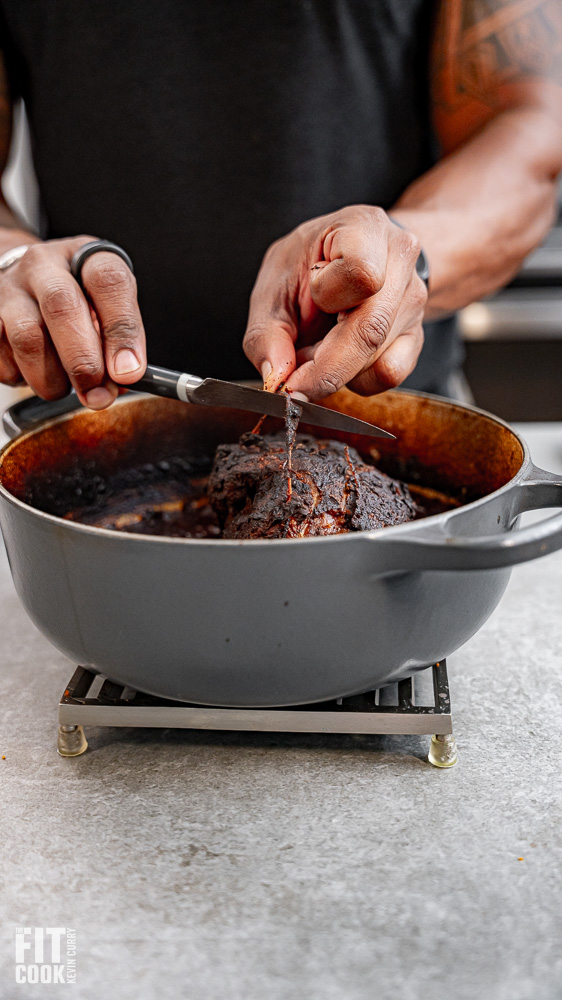

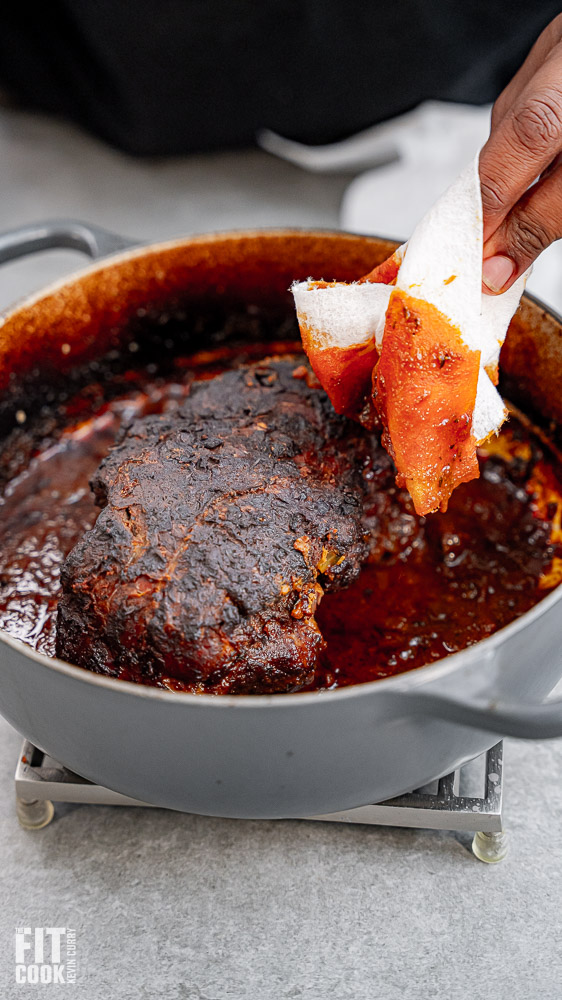
Shred the lamb and incorporate into the gravy.
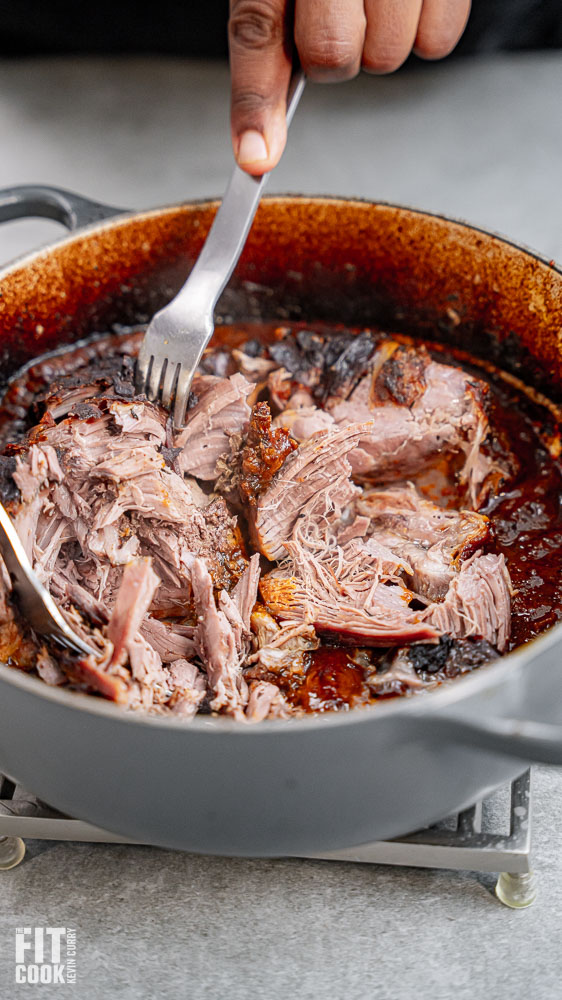
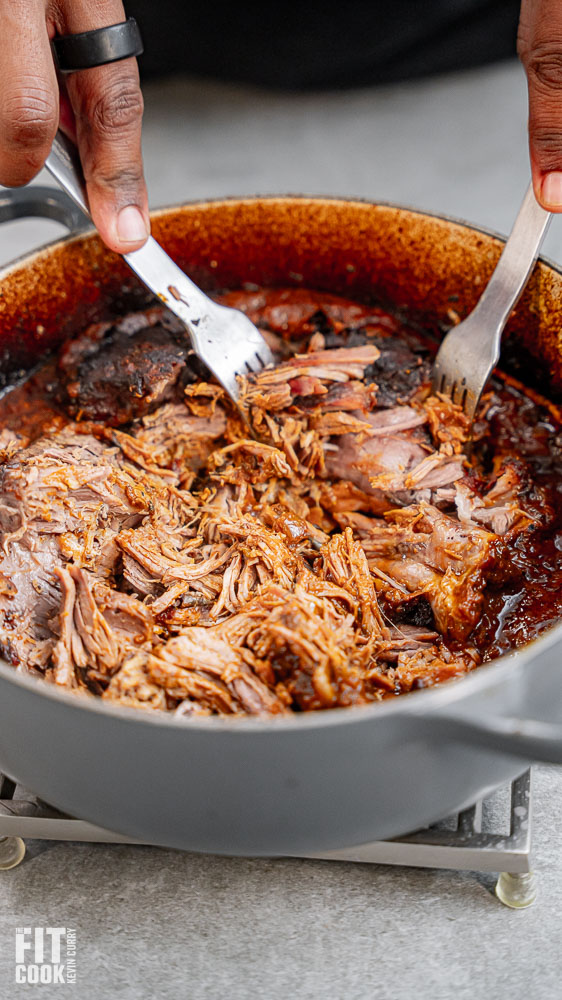
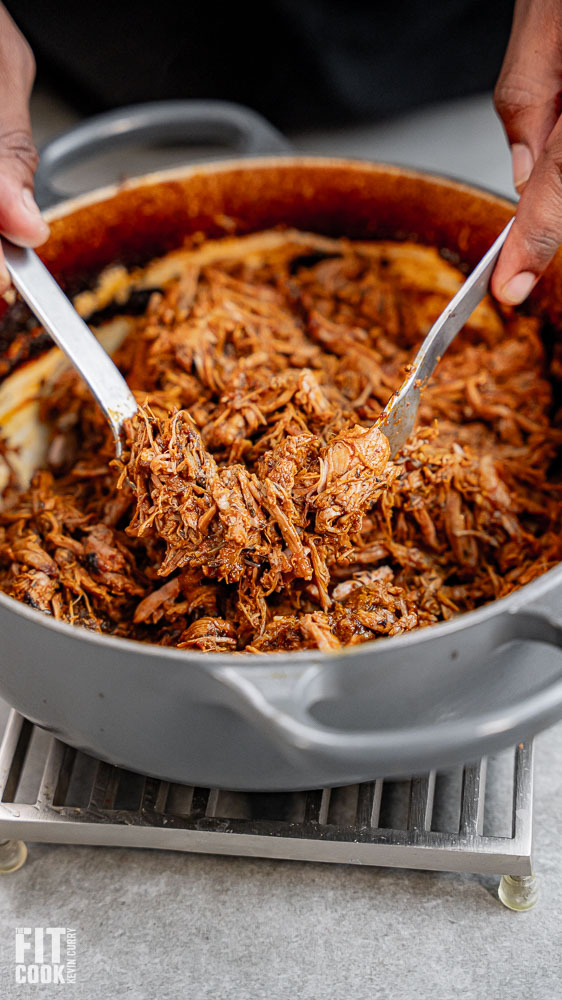
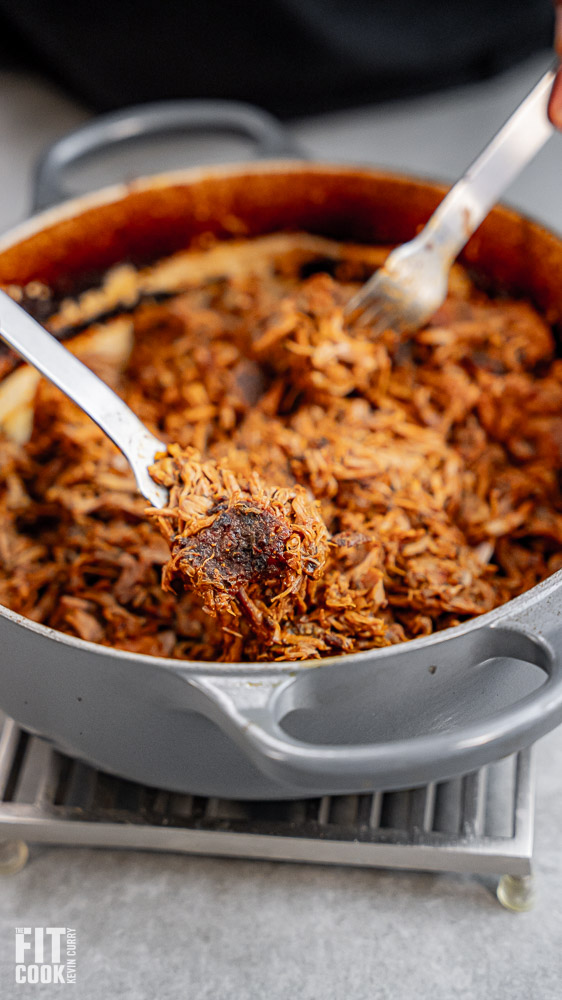
Add your choice of freshly chopped herbs like parsley or tarragon.
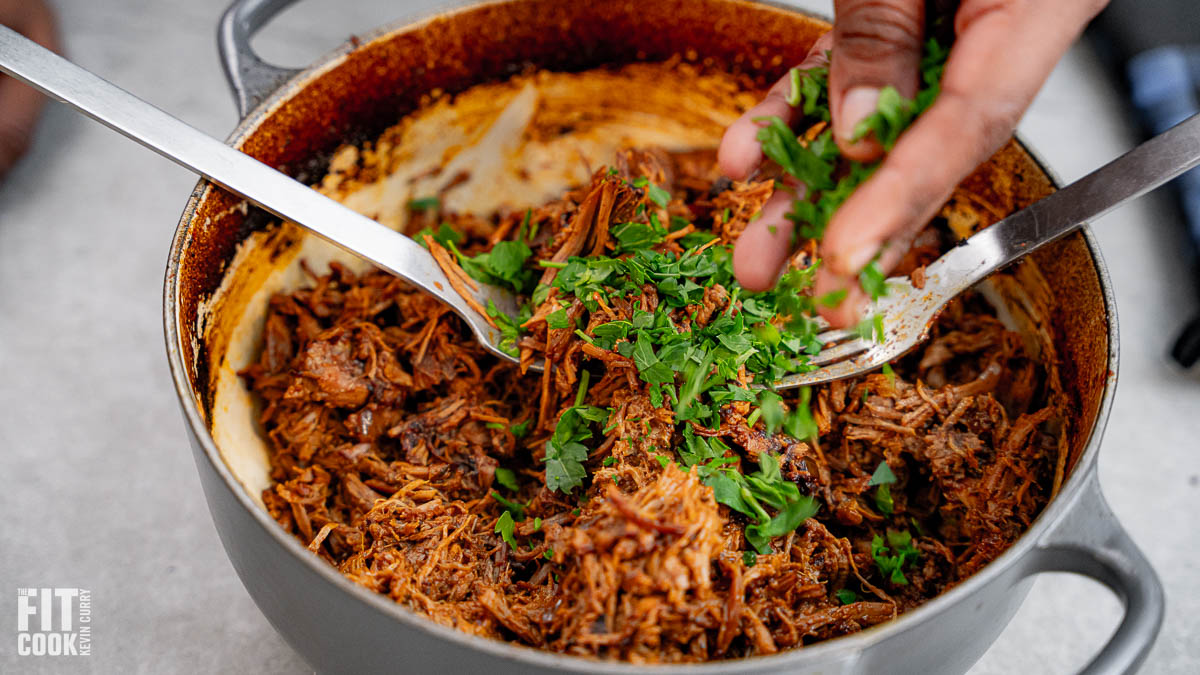
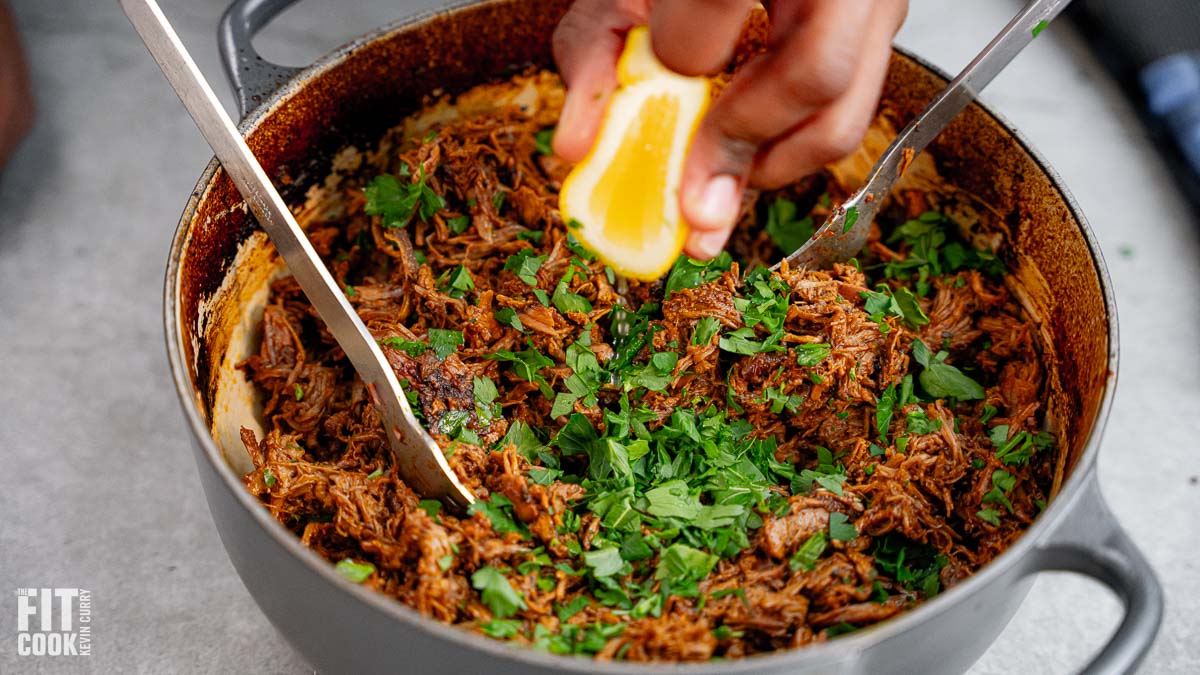
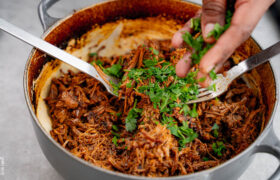

Slow Cooker Pulled Lamb Recipe
Ingredients
- 2.5lb lamb leg, boneless and fat trimmed
- 1 teaspoon mineral salt
- black pepper to taste
- 1/2 medium onion, chopped
- 3 garlic cloves, minced
- 1 tablespoon smoked paprika
- 1 tsp turmeric
- 1.5 tsp cumin
-
1 tsp dried thyme
oregano, rosemary
-
5oz red wine
red wine vinegar
- 1 cinnamon stick
- 2 cups low sodium beef broth
- 3 tablespoons tomato paste
- fresh parsley
- juice from 1/2 lemon or to taste
How to Make Pulled Lamb
Step 1
Follow these simple steps to create a delectable batch of slow-cooked pulled lamb:
Preheat the Oven: Begin by preheating your oven to 400°F/204°C. Proper oven temperature is crucial for achieving the perfect balance of tenderness and flavor.
Step 2
Prepare the Lamb: Start by patting the lamb leg dry with a paper towel to remove any excess moisture. This step ensures that the seasoning adheres evenly to the meat. Trim any visible fat from the lamb leg and use twine to tie it together, ensuring it maintains its shape during the cooking process. Season the lamb generously with salt and pepper, coating it evenly on all sides for maximum flavor.
Step 3
Sear the Lamb: Heat a Dutch oven or braiser over medium heat and lightly coat it with oil. Searing the lamb on all sides until golden brown creates a caramelized crust, sealing in the juices and enhancing the overall flavor of the dish. This step adds depth and complexity to the final product.
Step 4
Sauté Aromatics: In the same pan used to sear the lamb, sauté chopped onions until they become caramelized and fragrant. Then, add minced garlic and continue cooking until it releases its aromatic oils. These aromatics serve as the flavor foundation for the dish, infusing the lamb with an irresistible taste.
Step 5
Add Spices: Stir in the spice mix, allowing the spices to toast and release their essential oils. This step enhances the depth of flavor and complexity of the dish, creating a tantalizing aroma that will fill your kitchen.
Step 6
Deglaze the Pan: Pour in the red wine or red wine vinegar to deglaze the pan, scraping up any browned bits from the bottom. This process adds richness and depth to the sauce, infusing it with the savory essence of the lamb and aromatics.
Step 7
Simmer with Broth: Add low-sodium beef broth to the pan, along with a cinnamon stick and tomato paste. Bringing the mixture to a gentle simmer allows the flavors to meld together, creating a luscious sauce that will envelop the lamb as it cooks.
Step 8
Slow Roast the Lamb: Return the seared lamb to the pan, spooning some of the liquid over the top to ensure it remains moist and flavorful. Cover the pan and transfer it to the preheated oven to slow roast for 2 hours. This low and slow cooking method breaks down the collagen in the meat, resulting in tender, melt-in-your-mouth lamb that is infused with rich flavor.
Step 9
Finish Cooking: After 2 hours of slow roasting, uncover the lamb and continue roasting for an additional 45 minutes to 1 hour. This final step allows the exterior of the lamb to develop a crispy crust while the interior remains succulent and tender.
Step 10
Shred and Serve: Once the lamb is cooked to perfection, use forks to shred the meat, incorporating it into the flavorful gravy. Season to taste with salt, pepper, and a squeeze of fresh lemon juice for brightness. Garnish with chopped parsley to add a pop of color and freshness before serving.
Slow Cooker Pulled Lamb Recipe
Kevin Curry
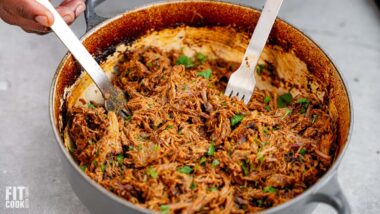
- 2.5lb lamb leg, boneless and fat trimmed
- 1 teaspoon mineral salt
- black pepper to taste
- 1/2 medium onion, chopped
- 3 garlic cloves, minced
- 1 tablespoon smoked paprika
- 1 tsp turmeric
- 1.5 tsp cumin
-
1 tsp dried thyme
oregano, rosemary
-
5oz red wine
red wine vinegar
- 1 cinnamon stick
- 2 cups low sodium beef broth
- 3 tablespoons tomato paste
- fresh parsley
- juice from 1/2 lemon or to taste
-
Follow these simple steps to create a delectable batch of slow-cooked pulled lamb:
Preheat the Oven: Begin by preheating your oven to 400°F/204°C. Proper oven temperature is crucial for achieving the perfect balance of tenderness and flavor.
-
Prepare the Lamb: Start by patting the lamb leg dry with a paper towel to remove any excess moisture. This step ensures that the seasoning adheres evenly to the meat. Trim any visible fat from the lamb leg and use twine to tie it together, ensuring it maintains its shape during the cooking process. Season the lamb generously with salt and pepper, coating it evenly on all sides for maximum flavor.
-
Sear the Lamb: Heat a Dutch oven or braiser over medium heat and lightly coat it with oil. Searing the lamb on all sides until golden brown creates a caramelized crust, sealing in the juices and enhancing the overall flavor of the dish. This step adds depth and complexity to the final product.
-
Sauté Aromatics: In the same pan used to sear the lamb, sauté chopped onions until they become caramelized and fragrant. Then, add minced garlic and continue cooking until it releases its aromatic oils. These aromatics serve as the flavor foundation for the dish, infusing the lamb with an irresistible taste.
-
Add Spices: Stir in the spice mix, allowing the spices to toast and release their essential oils. This step enhances the depth of flavor and complexity of the dish, creating a tantalizing aroma that will fill your kitchen.
-
Deglaze the Pan: Pour in the red wine or red wine vinegar to deglaze the pan, scraping up any browned bits from the bottom. This process adds richness and depth to the sauce, infusing it with the savory essence of the lamb and aromatics.
-
Simmer with Broth: Add low-sodium beef broth to the pan, along with a cinnamon stick and tomato paste. Bringing the mixture to a gentle simmer allows the flavors to meld together, creating a luscious sauce that will envelop the lamb as it cooks.
-
Slow Roast the Lamb: Return the seared lamb to the pan, spooning some of the liquid over the top to ensure it remains moist and flavorful. Cover the pan and transfer it to the preheated oven to slow roast for 2 hours. This low and slow cooking method breaks down the collagen in the meat, resulting in tender, melt-in-your-mouth lamb that is infused with rich flavor.
-
Finish Cooking: After 2 hours of slow roasting, uncover the lamb and continue roasting for an additional 45 minutes to 1 hour. This final step allows the exterior of the lamb to develop a crispy crust while the interior remains succulent and tender.
-
Shred and Serve: Once the lamb is cooked to perfection, use forks to shred the meat, incorporating it into the flavorful gravy. Season to taste with salt, pepper, and a squeeze of fresh lemon juice for brightness. Garnish with chopped parsley to add a pop of color and freshness before serving.
Nutrition per serving
Popular Content
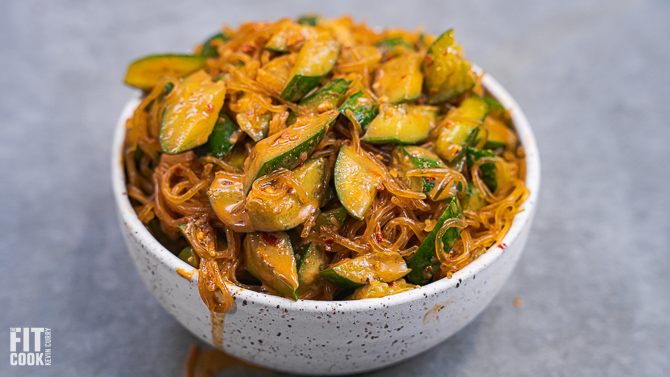
Kelp Noodle Salad
Indulge in the captivating flavors of my kelp noodle salad recipe, a delightful fusion of...
April 25, 2024
ABOUT THE AUTHOR
Hey, I'm Kevin
My name is Kevin. My life changed when I realized that healthy living is a lifelong journey, mainly won by having a well-balanced diet and maintaining an active lifestyle.
By experimenting in the kitchen and sharing my meals on Tumblr, I learned healthy eating is not boring! By making a few adjustments to my favorite foods, I could design a diet that could help me achieve my wellness goals while satisfying my desire for BANGIN food! 😅 Now I try to help people around the world realize that same level of freedom in eating regardless of budget. Welcome, let's #DemocratizeWellness together!
